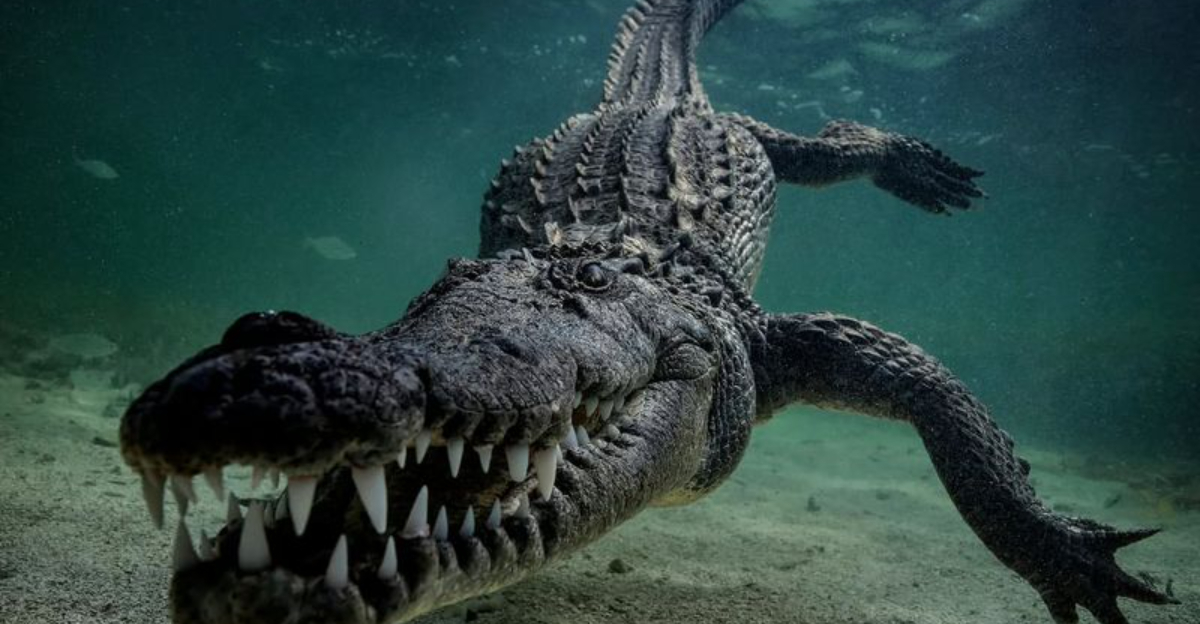In the vast tapestry of nature, the quest for survival manifests in myriad fascinating ways. Among these, the hunting techniques of certain animals stand out for their sheer ingenuity and oddity.
From the depths of the ocean to the canopy of the rainforest, each creature has evolved its unique methods to capture prey, ensuring its survival in the wild.
Let’s delve into the captivating world of these creatures and explore the bizarre strategies they employ in their hunt.
1. Trapdoor Spider
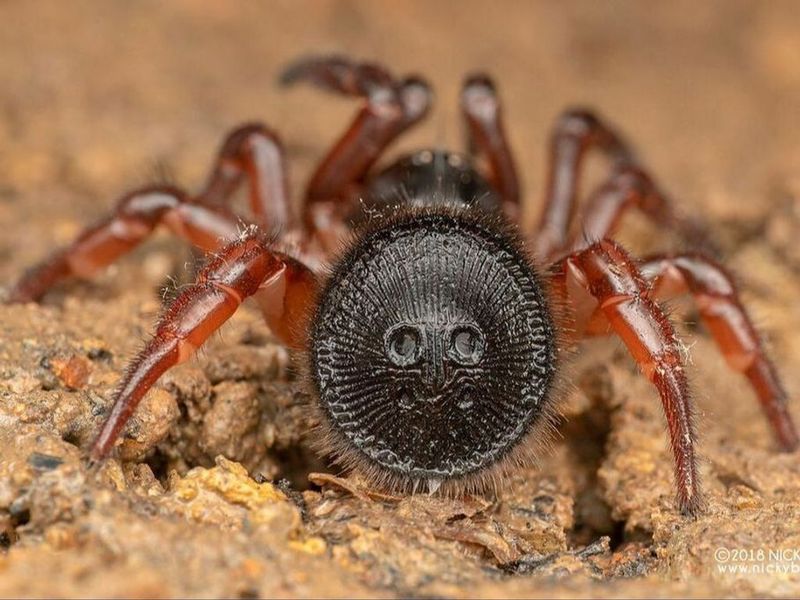
In the realm of arachnids, one spider stands out for its exceptional hunting technique. Burrowing underground, it constructs a clever trapdoor made of soil and silk.
This camouflaged entrance is virtually invisible, lying in wait. The spider lurks silently beneath. When unsuspecting prey passes, the trapdoor bursts open, and the spider lunges forth with lightning precision. This technique ensures the element of surprise, capturing insects or even small animals unaware.
It relies on stealth, patience, and remarkable speed. The trapdoor spider’s success hinges on its ability to blend seamlessly with its surroundings, making it a master of ambush.
Such an approach requires minimal energy compared to active hunting, allowing the spider to conserve resources. Its evolutionary adaptation showcases a perfect blend of engineering and predation, highlighting the wonders of nature’s ingenuity.
2. Anglerfish
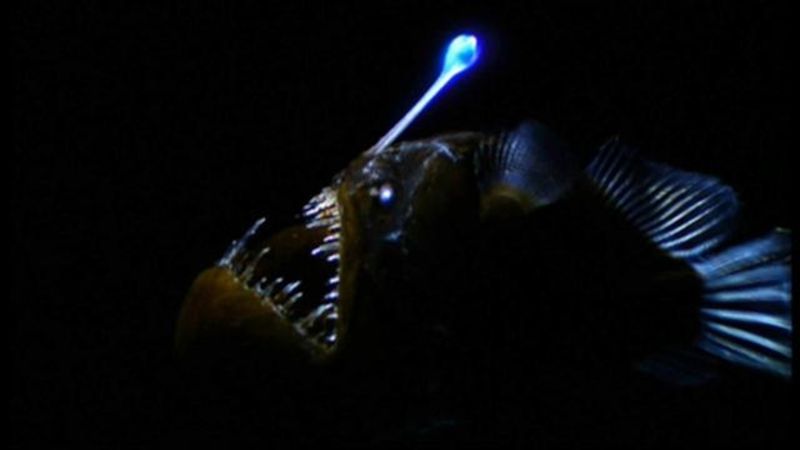
In the dark abyss of the ocean, the anglerfish employs one of nature’s cleverest ruses. Its bioluminescent lure dangles above its head like a beckoning lantern.
This mesmerizing light attracts prey in the pitch-black waters of the deep sea. As curious fish swim closer, drawn by the glow, they become easy targets.
The anglerfish waits patiently, motionless, until the unsuspecting victim is within striking distance. With jaws agape, it snaps shut, consuming its prey whole.
This technique not only highlights the anglerfish’s cunning but also its adaptation to the harsh, lightless environment. Its lure is an extension of its dorsal spine, evolved to mimic the appearance of small, glowing prey.
This predatory strategy exemplifies nature’s brilliance in evolving species to their specific habitats.
3. Bolas Spider
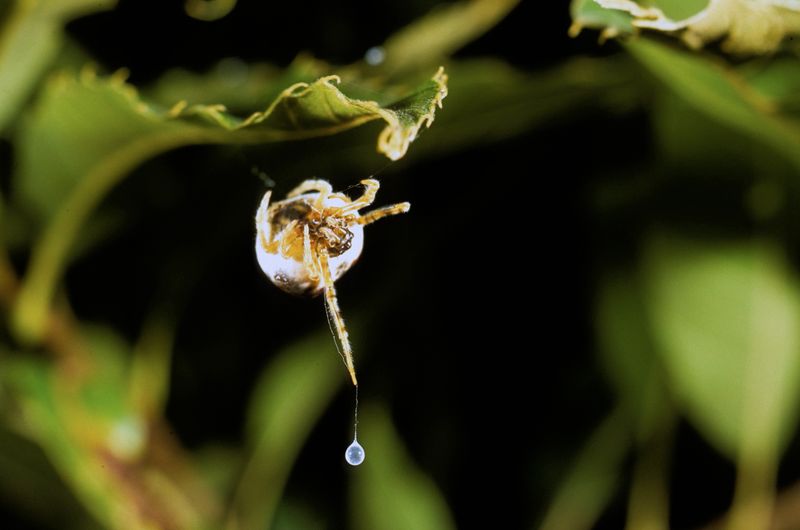
Unlike its web-weaving counterparts, the bolas spider uses a silk-based weapon in a unique way. Instead of constructing a static web, this spider spins a small, silken net, holding it between its legs.
It positions itself strategically near potential prey pathways. Once an insect approaches, the bolas spider casts its net with precision, ensnaring the prey in a swift, decisive move.
This method allows it to hunt in various locations, adapting to different environments and prey types. Its technique showcases flexibility and skill, requiring acute timing and coordination.
The bolas spider’s hunting tactic is a testament to the diverse strategies spiders can evolve, each suited to maximize their predatory success.
4. Galapagos Hawk
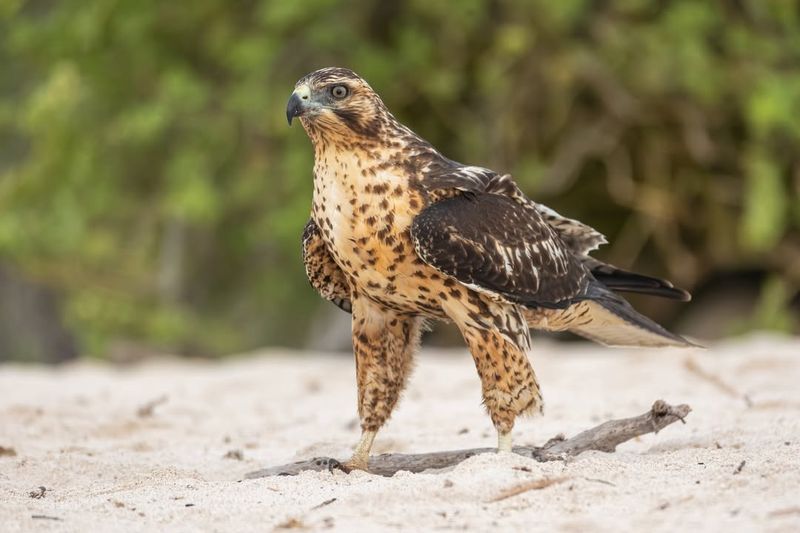
The Galapagos Hawk is a top predator in the Galápagos Islands, known for its cooperative hunting strategies.
They often hunt in groups, which allows them to take down larger prey than they could alone. These hawks utilize their keen eyesight to spot prey from a distance and work together to flush it out.
Once the prey is caught, the group shares the meal, a rare behavior among birds of prey. This cooperation and adaptability make them successful hunters on the islands.
5. Mantis Shrimp
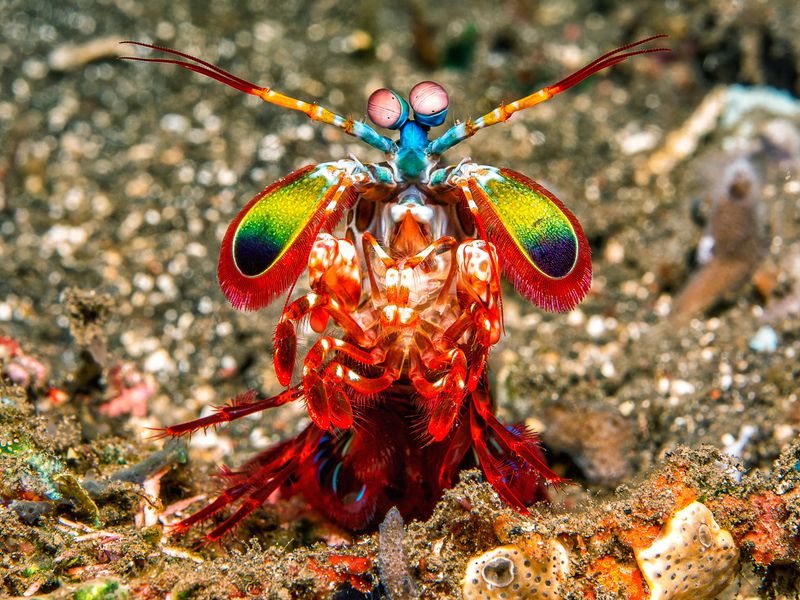
Beneath the waves, the mantis shrimp wields one of the fastest punches in the animal kingdom. Its raptorial appendages can strike with the speed of a bullet, delivering a powerful blow to unsuspecting prey.
This incredible force is used to break open hard shells or stun soft-bodied targets. Living in burrows, the mantis shrimp uses its keen eyesight to spot prey from a distance. Its complex eyes can detect polarized light, giving it an edge in locating targets.
This combination of speed, power, and vision makes the mantis shrimp a formidable predator. Its hunting technique is a marvel of biological engineering, demonstrating the adaptability and resourcefulness of marine life.
6. Electric Eel
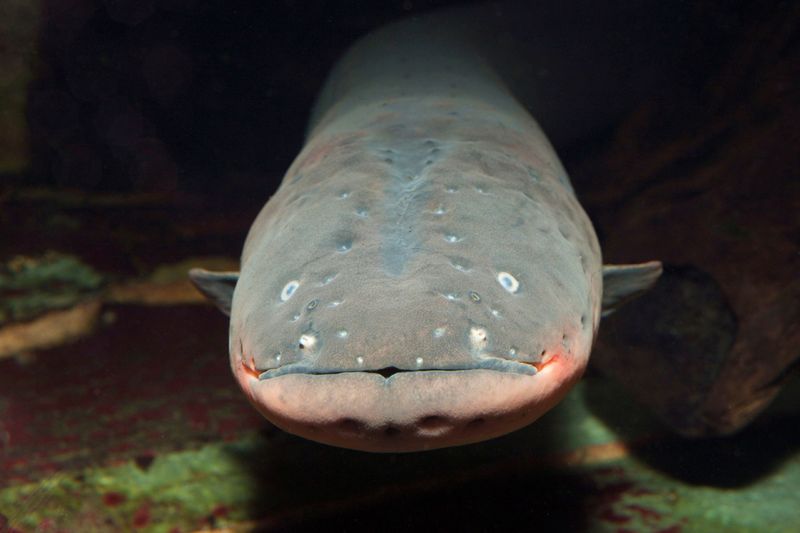
In the murky waters of the Amazon, the electric eel reigns supreme with its shocking hunting method. By generating high-voltage electric pulses, it stuns fish and other small creatures, rendering them helpless.
This ability allows it to hunt effectively in the turbid waters of its habitat. The electric eel’s unique physiology includes specialized cells, known as electrocytes, which produce electricity. These pulses can be used for navigation, communication, and hunting.
Its predatory prowess is a testament to the innovative adaptations evolved by creatures to thrive in challenging environments. The electric eel’s hunting technique highlights the diverse and ingenious ways animals have evolved to capture prey.
7. Archerfish
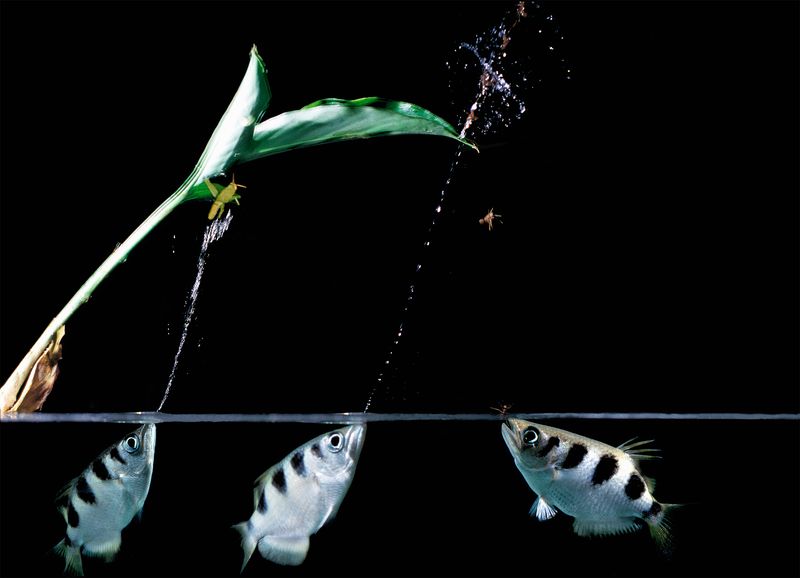
Skimming the surface waters, the archerfish displays a remarkable hunting skill. By shooting jets of water from its mouth, it knocks insects off branches and leaves into the water.
This precision shooting is a rare skill among fish. The archerfish carefully calculates the angle and force required to dislodge prey.
With excellent eyesight, it compensates for light refraction, ensuring accuracy. This technique demonstrates the archerfish’s ingenuity and adaptability, highlighting a method that turns its aquatic environment into an advantage.
Its unique hunting strategy showcases the extraordinary adaptations found in the natural world.
8. Komodo Dragon
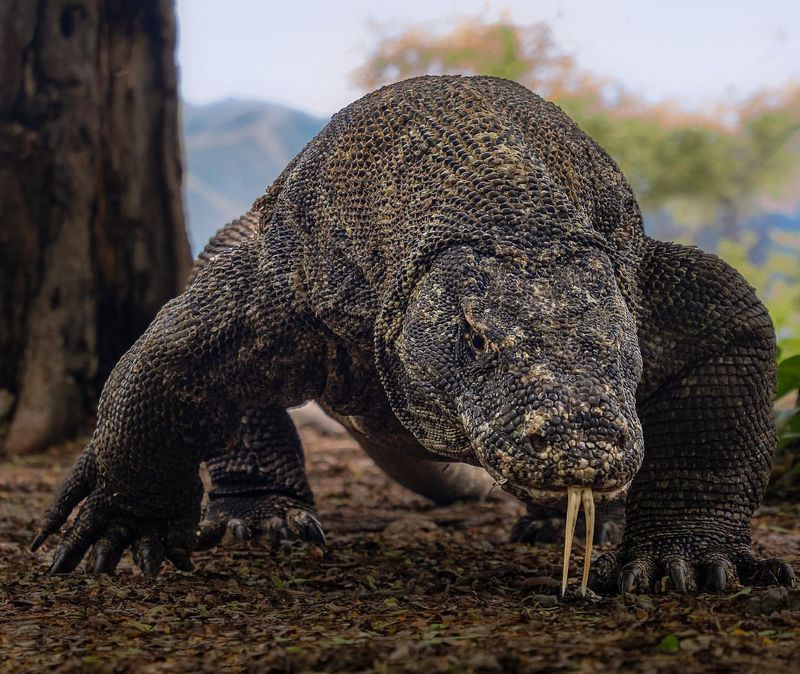
On the Indonesian islands, the Komodo dragon reigns as a top predator with a unique approach. Utilizing its keen sense of smell, it detects carrion from miles away.
With a slow, deliberate stalk, it closes in on its prey. The dragon’s saliva contains toxic bacteria, infecting wounds inflicted by its bite. It waits patiently for the prey to weaken before consuming it.
This method ensures minimal energy expenditure. Such a strategic approach, relying on stealth and biological weapons, exemplifies the Komodo dragon’s dominance in its ecosystem.
9. Star-Nosed Mole
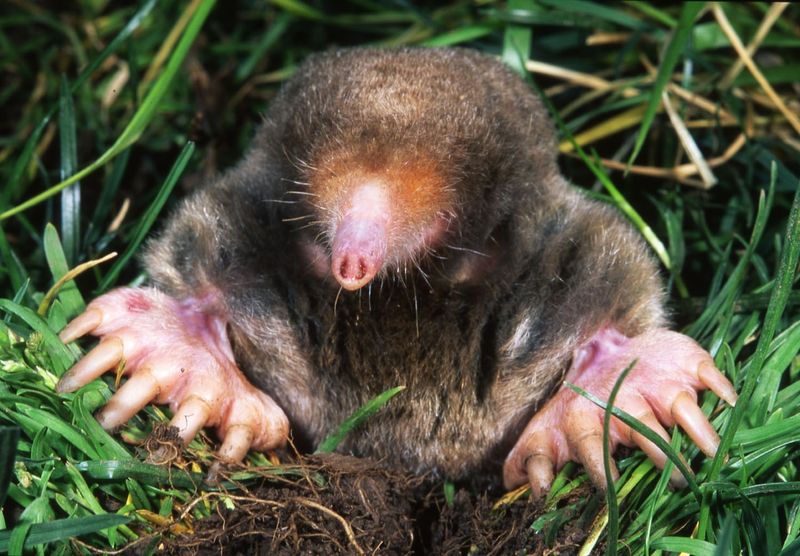
In the subterranean world, the star-nosed mole employs a bizarre sensory apparatus. Its nose, adorned with 22 fleshy appendages, acts as a tactile organ, detecting prey in the dark.
This mole can identify and consume prey in milliseconds. Hunting through moist soil, it relies on touch rather than sight, exploring its environment with unmatched speed.
The star-shaped nose allows it to sense minute vibrations, guiding it towards its next meal. This specialized adaptation highlights the star-nosed mole’s mastery of its niche, showcasing a hunting technique that is both efficient and extraordinary.
10. Albatross
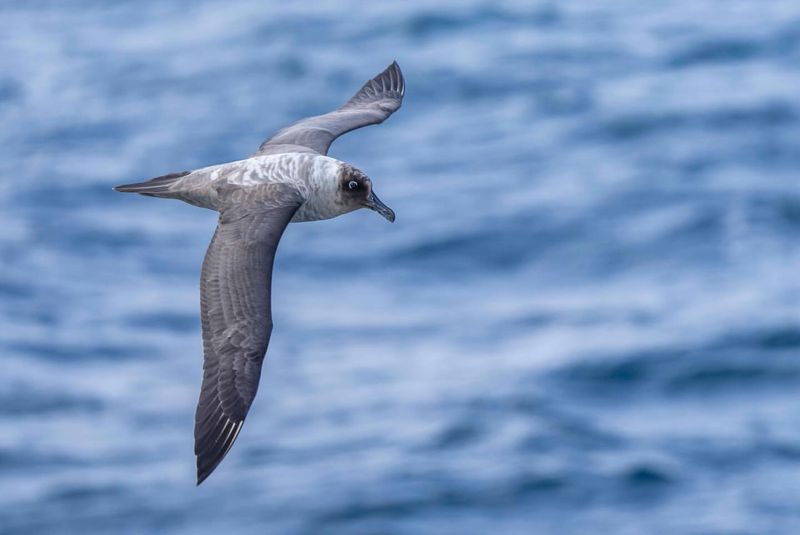
Majestic in flight, the albatross utilizes wind currents to cover vast distances with minimal effort. This technique allows it to scout for food over expansive oceanic regions.
By riding the wind, the albatross conserves energy, essential for its long journeys. As it skims the waves, it expertly locates fish and squid near the surface, swooping down with precision. Its ability to travel great distances increases its hunting range, ensuring sustenance.
This method exemplifies the albatross’s adaptation to its pelagic lifestyle, highlighting a remarkable strategy to thrive in the open ocean.
11. Pistol Shrimp
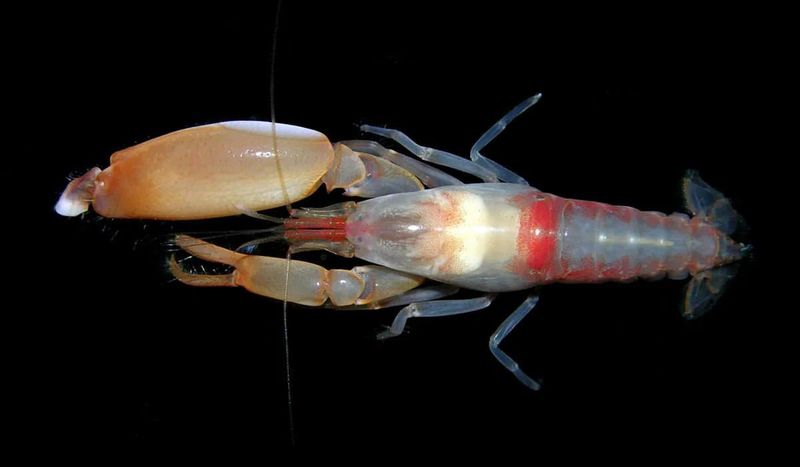
In the vibrant coral reefs, the pistol shrimp wields a remarkable weapon. By snapping its claw, it creates a cavitation bubble, producing a loud sound, making it one of the loudest animal in the world, and a shockwave capable of stunning their prey.
This snap is one of the loudest sounds in the ocean. The shrimp uses this technique to catch small fish and invertebrates, relying on surprise and power.
It also employs the bubble for communication and defense. This hunting strategy highlights the pistol shrimp’s unique adaptation, showcasing the incredible diversity and ingenuity of marine life.
12. Frogfish
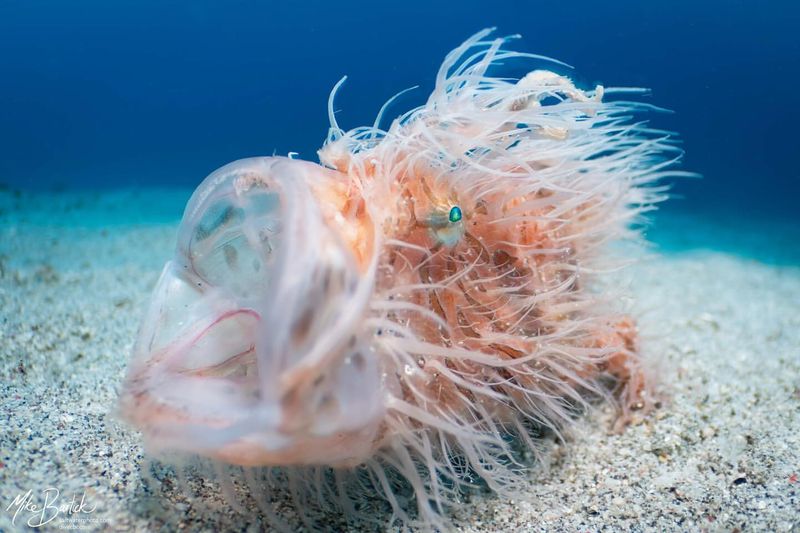
Blending seamlessly with its surroundings, the frogfish is a master of deception. It uses a specialized lure, an extension of its dorsal fin, to attract prey.
This lure mimics small fish or worms, enticing curious victims. Stationary and patient, the frogfish waits for its prey to approach within striking range. In a flash, it expands its mouth, engulfing the prey whole.
This technique relies on camouflage and surprise, making the frogfish a formidable ambush predator. Its hunting method demonstrates the evolutionary advantage of disguise and patience.
13. Orca
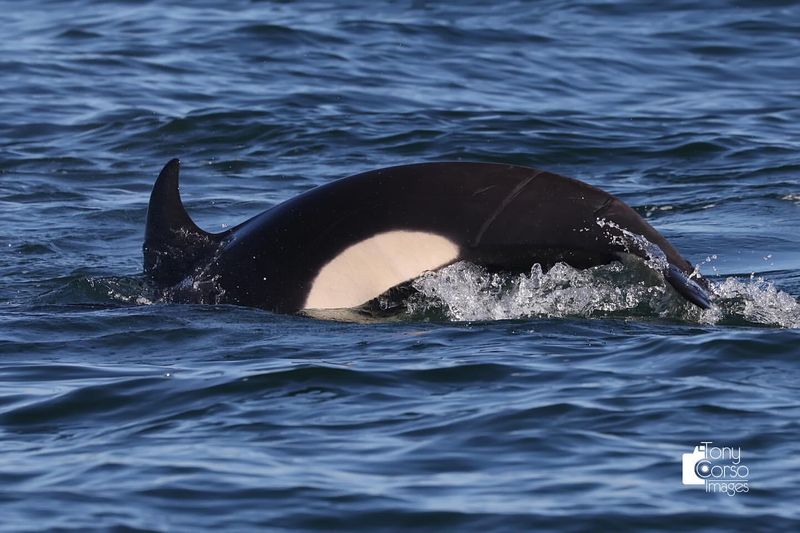
In the icy waters of the Arctic, orcas showcase intelligent hunting techniques. They work cooperatively to create waves, knocking seals off ice floes.
This teamwork exemplifies their social structure and strategic planning. Orcas use echolocation to track prey, coordinating their efforts with precision.
Their complex communication aids in executing elaborate hunting strategies. These tactics highlight the orca’s position as an apex predator, showcasing intelligence and adaptability in challenging environments.
14. Antlion Larvae
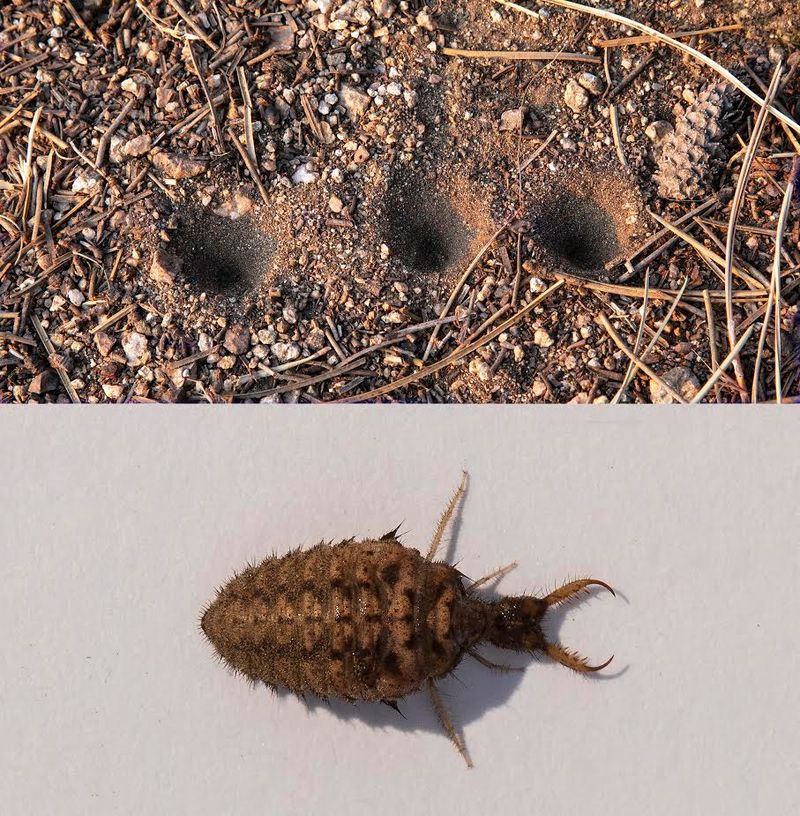
Beneath the surface of sandy soils, antlion larvae construct lethal traps. They dig conical pits, waiting at the bottom for unsuspecting ants to fall in.
As prey slips on the loose sand, the antlion snaps it up. This technique is a blend of engineering and patience.
The larvae use their mandibles to capture prey, relying on the pit’s structure to funnel victims. The antlion’s method showcases a unique predatory strategy, highlighting the wonders of adaptation and survival in the insect world.
15. Cone Snail
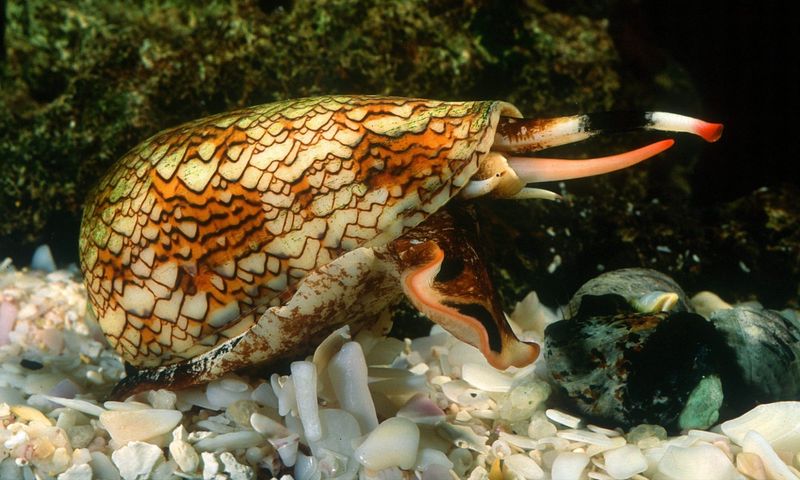
In the colorful coral reefs, the cone snail hides a lethal secret. It uses a harpoon-like tooth to inject venom into prey.
This rapid strike paralyzes fish, allowing the snail to consume them at leisure. The venom contains a cocktail of toxins, evolved to subdue various prey types.
The cone snail’s hunting method is both efficient and lethal. This strategy highlights the evolutionary arms race in marine environments, showcasing a predator’s adaptation to a competitive ecosystem.
16. Crocodile
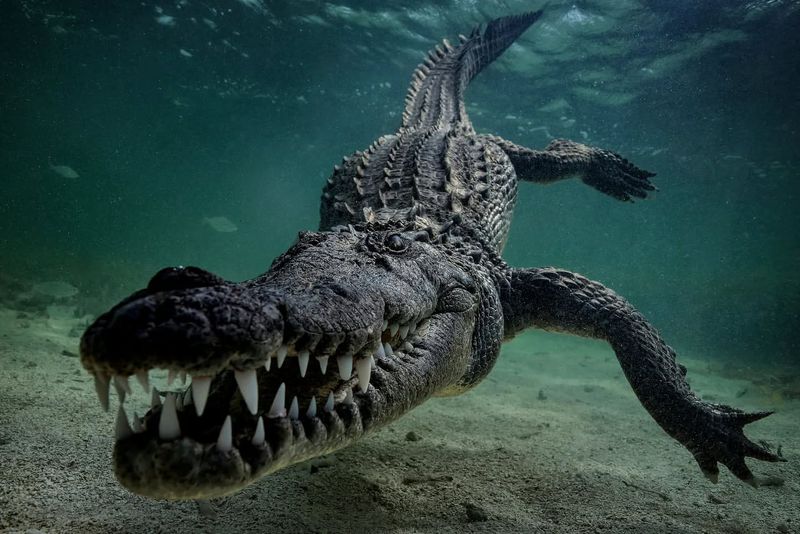
Silent and stealthy, crocodiles employ ambush tactics in their aquatic habitats. Submerged with only eyes and nostrils visible, they patiently wait for unsuspecting prey.
When the moment is right, they lunge with explosive power. This method relies on camouflage, patience, and speed.
Crocodiles can capture a variety of prey, from fish to large mammals, making them versatile hunters. Their approach emphasizes the importance of stealth and timing in the animal kingdom, showcasing a hunting strategy honed over millions of years.

